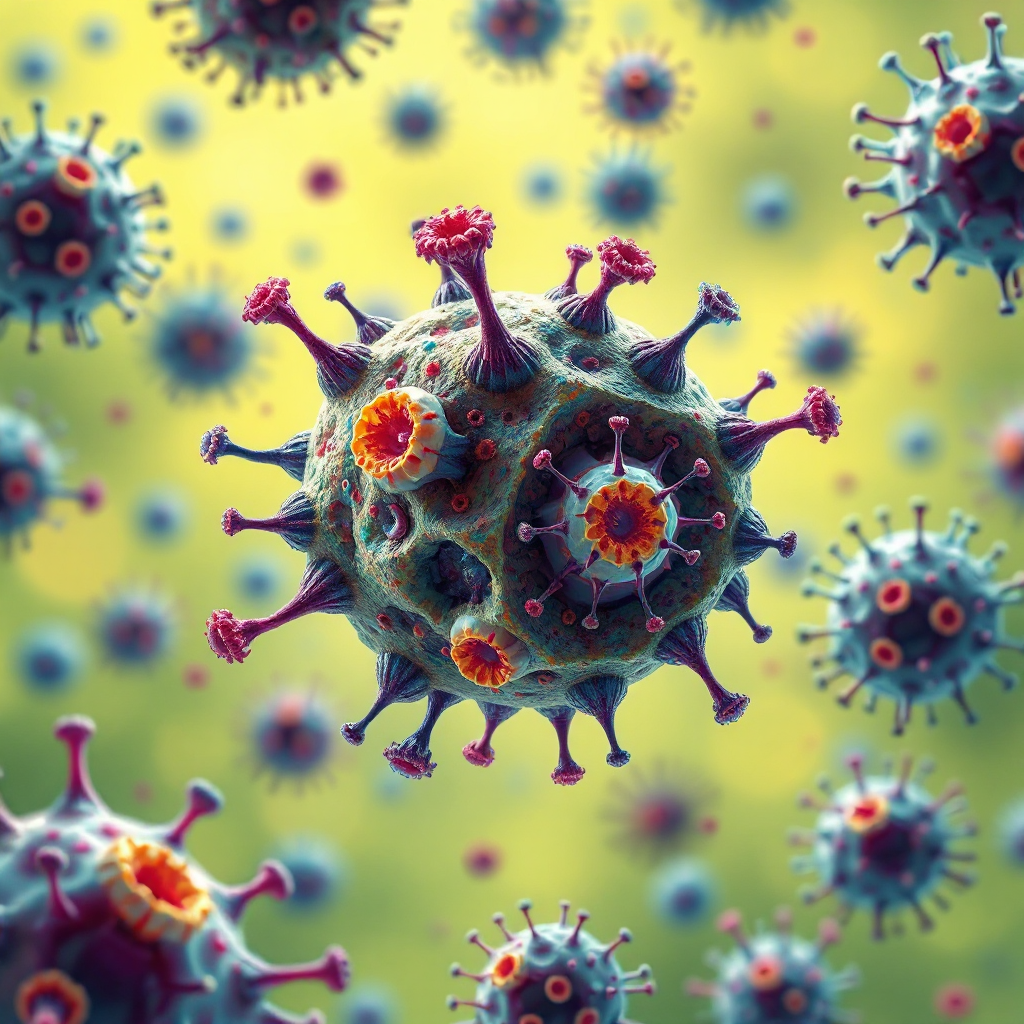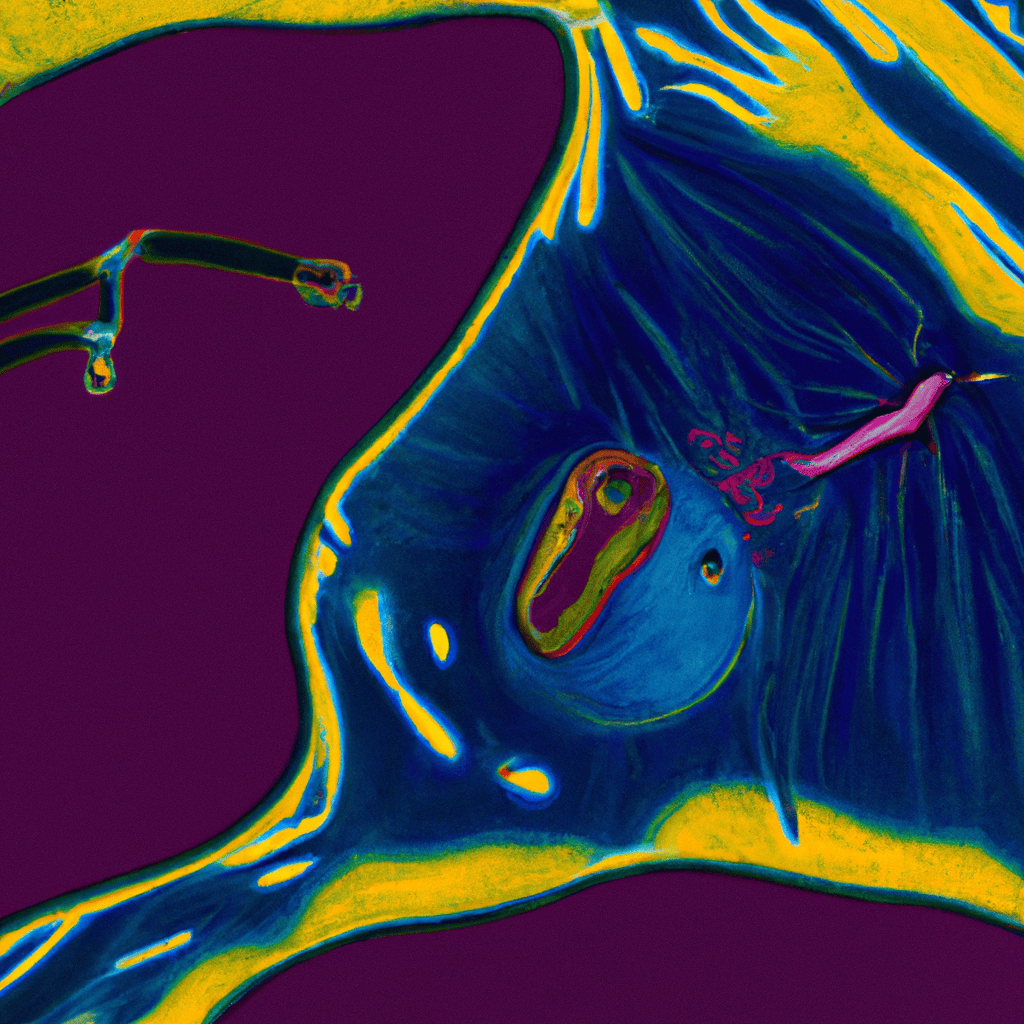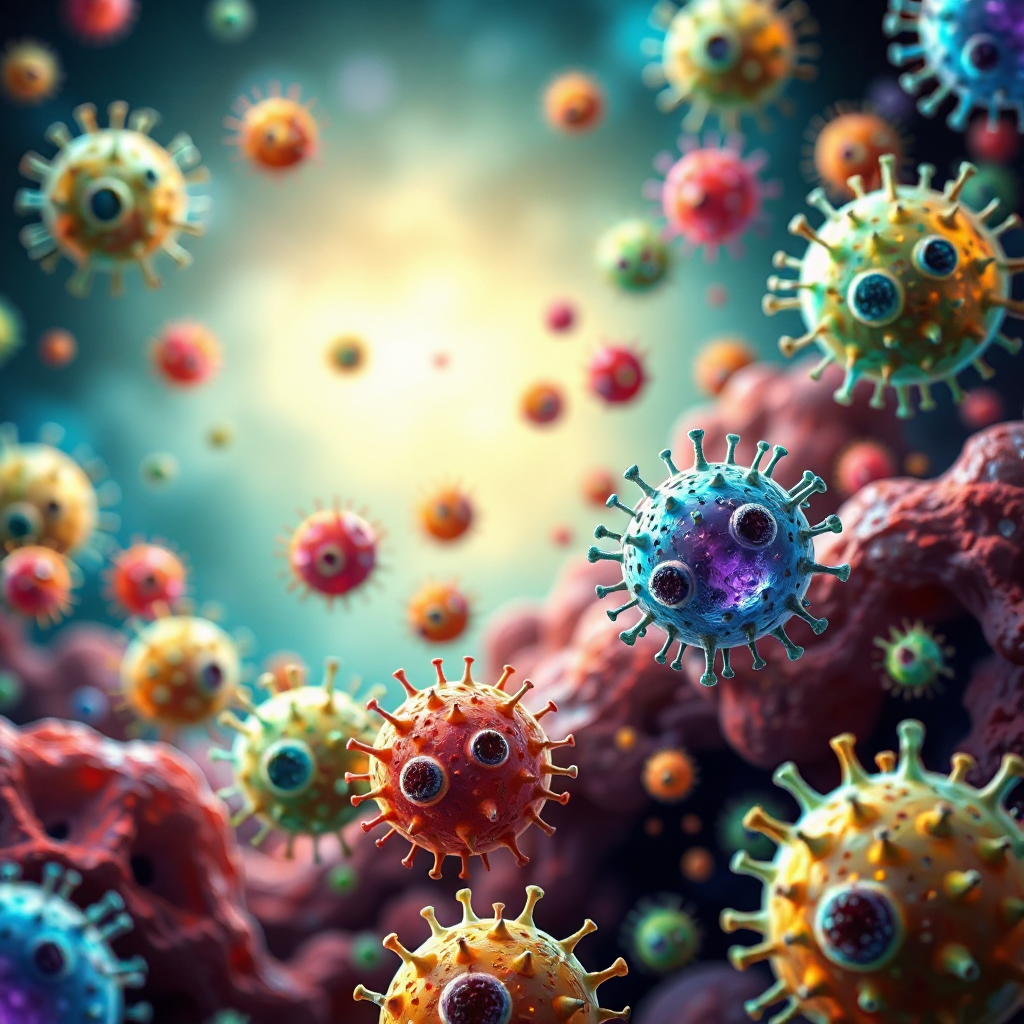Understanding Mycosis Fungoides as a Primary Cutaneous Lymphoma

Mycosis fungoides, the most common form of cutaneous T-cell lymphoma, begins in the skin and progresses through distinct stages. It accounts for 50% of lymphomas of primary cutaneous origin as sample mycosis fungoides and affects about 1 in 100,000 to 350,000 individuals globally. Early symptoms, like red, scaly patches, often mimic benign skin conditions, making early diagnosis challenging. However, recognizing these signs can lead to timely treatment, which significantly improves outcomes. For instance, early-stage patients have a five-year survival rate of 87%, highlighting the importance of vigilance in identifying this rare condition.
Key Takeaways
Mycosis fungoides is a common skin lymphoma. It affects 1 in 100,000 to 350,000 people worldwide.
Early signs include red, scaly spots that look like eczema or psoriasis. Spotting these signs early helps with better treatment.
The disease has four stages: premycotic, patch, plaque, and tumor. Each stage has different symptoms needing specific care.
Creams like corticosteroids and light therapy work for early stages. Advanced stages may need stronger medicines or radiation.
Seeing a skin doctor quickly for lasting skin changes can help with diagnosis and treatment.
What Are Lymphomas of Primary Cutaneous Origin as Sample Mycosis Fungoides?
Definition and Classification
Lymphomas of primary cutaneous origin as sample mycosis fungoides are a group of rare cancers that begin in the skin. Unlike other lymphomas, these do not initially affect the lymph nodes or internal organs. Mycosis fungoides, the most common form of cutaneous T-cell lymphoma, arises from the malignant transformation of T cells. These abnormal T cells target the skin, leading to symptoms like patches, plaques, and tumors as the disease progresses.
Key characteristics of mycosis fungoides include:
It is the most prevalent type of cutaneous T-cell lymphoma.
It progresses through distinct stages: patches, plaques, and tumors.
Histologically, it shows an epidermotropic infiltrate of small to medium-sized CD4+ T-cells.
This classification helps doctors differentiate mycosis fungoides from other types of lymphomas and skin conditions.
How Mycosis Fungoides Differs from Other Skin Conditions and Lymphomas
Mycosis fungoides often resembles common skin conditions like eczema or psoriasis, especially in its early stages. You might notice red, scaly patches on your skin that extend over the trunk or extremities. These patches can look like rashes seen in psoriasis or eczema, which makes diagnosis challenging. However, unlike these conditions, mycosis fungoides progresses to plaques and tumors over time.
Compared to other lymphomas, mycosis fungoides stands out due to its unique progression and symptoms. It begins in the skin and remains localized there for a long time before spreading. Histological analysis reveals specific features, such as CD4+ T-cell infiltration, which are not seen in other lymphomas. These distinctions are crucial for accurate diagnosis and treatment planning.
Symptoms of Mycosis Fungoides

Early Symptoms
Red, Scaly Patches
In the early stages, mycosis fungoides often presents with red, scaly patches on the skin. These patches may appear flat and irregular, with a wrinkled or scaly surface. You might notice them developing in areas typically protected from the sun, such as the chest, lower abdomen, or buttocks. These lesions can vary in size and may come and go over several years, making them easy to mistake for conditions like eczema or psoriasis.
Common features of these patches include:
Skin redness or irritation.
Flat lesions that may feel rough or scaly.
White, light brown, or tan spots.
Itching and Skin Discoloration
Itchy skin is another hallmark of early mycosis fungoides. The itching can range from mild to severe, often accompanied by skin discoloration. You might observe red to brown or purple lesions that stand out against your natural skin tone. Over time, these areas may develop a shiny or scaly appearance. Persistent itching and discoloration should prompt you to seek medical advice, as early detection is crucial for effective treatment.
Advanced Symptoms
Plaques and Tumors
As mycosis fungoides progresses, the patches may thicken into plaques or develop into tumors. Plaques are raised, thicker lesions that feel firm to the touch. Tumors, on the other hand, appear as large nodules that can be dome-shaped, exophytic (protruding), or even ulcerated. These advanced lesions often have a red-violet color and may cause significant discomfort.
Systemic Symptoms (e.g., fever, weight loss)
In advanced stages, systemic symptoms may emerge. You could experience erythroderma, a condition marked by widespread redness, peeling, and swelling of the skin. This stage often brings intense itching and discomfort. Additionally, peripheral lymphadenopathy (swollen lymph nodes) becomes more common as the disease spreads. Other systemic signs, such as fever, weight loss, and fatigue, may indicate that the lymphoma has progressed beyond the skin.
Note: Early recognition of these symptoms can make a significant difference in managing mycosis fungoides. If you notice persistent skin changes or systemic symptoms, consult a healthcare provider promptly.
Stages of Mycosis Fungoides

Premycotic Phase
In the premycotic phase, you may notice irregular, red patches on your skin. These lesions often appear in sun-protected areas like the chest, lower abdomen, or buttocks. The skin in these areas may look scaly or wrinkled, but the patches are usually asymptomatic. Some individuals experience mild itching, which can persist over time.
Here are the defining characteristics of this phase:
Characteristic | Description |
|---|---|
Lesion Type | Irregular, erythematous skin lesions |
Skin Appearance | Overlying scaly, wrinkled skin |
Location | Sun-protected areas (chest, lower abdomen, buttocks) |
Size | Variable in size |
Progression | May evolve into thickened plaques that are red, purplish, or brown |
Initial Symptoms | Often asymptomatic, may present with chronic itch |
These early signs can be subtle, making it easy to confuse this phase with benign skin conditions like eczema. However, vigilance is key, as these patches may progress to more advanced stages.
Patch Phase
During the patch phase, the lesions become more defined. You might observe flat, scaly patches that are red or brown in color. These patches often appear on sun-protected areas and may feel rough to the touch. While they can be single or multiple, they are usually irregular in shape. Mild itching is common, but the patches remain relatively flat at this stage.
This phase marks the beginning of noticeable changes in the skin. Over time, these patches may evolve into thicker, raised lesions, signaling the transition to the next stage.
Plaque Phase
In the plaque phase, the lesions become raised and thickened. You may notice that the patches from earlier stages have developed into plaques with well-defined borders. These plaques often appear reddish, purplish, or brown and may cover larger areas of your body. They can feel firm to the touch and are often accompanied by itching.
Unlike the patch phase, plaques are more prominent and may cause discomfort. This stage represents a significant progression of the disease, requiring closer medical attention. If left untreated, plaques can evolve into tumors, marking the next phase of Mycosis Fungoides.
Tip: Early detection and treatment during the premycotic or patch phases can help slow the progression of Mycosis Fungoides. If you notice persistent skin changes, consult a dermatologist promptly.
Tumor Phase
In the tumor phase of mycosis fungoides, you may notice the development of large, irregular lumps on your skin. These tumors often evolve from existing plaques and represent the most advanced stage of the disease. The lesions become more prominent and may cause significant discomfort or pain. At this stage, the risk of systemic involvement increases, making prompt medical attention essential.
The tumors in this phase exhibit distinct characteristics. They typically appear as red-violet nodules with a shiny surface. Some may be dome-shaped or protrude outward, while others might ulcerate, leading to open sores. These features make the tumor phase visually and physically more severe than earlier stages.
Here is a summary of the clinical features of the tumor phase:
Feature Description | Characteristics |
|---|---|
Tumor Size | Large irregular lumps (>1 cm) developing from plaques |
Color | Deep red to violaceous color, often with a shiny surface |
Tumor Appearance | Red-violet nodules that may be dome-shaped, exophytic, or ulcerated |
You might also experience additional symptoms, such as increased itching, pain, or even infections in ulcerated areas. These symptoms can significantly impact your quality of life. If the disease spreads beyond the skin, systemic symptoms like fever, fatigue, or swollen lymph nodes may occur.
Note: Early intervention during this phase can help manage symptoms and prevent further complications. If you observe these changes, consult your healthcare provider immediately. Treatment options, including radiation therapy or systemic therapies, can help control the disease and improve your comfort.
How Is Mycosis Fungoides Diagnosed?
Clinical Examination and Medical History
Diagnosing Mycosis Fungoides begins with a thorough clinical examination and a detailed review of your medical history. Doctors look for specific skin changes, such as red, scaly patches or plaques, and assess their progression over time. They may ask about symptoms like itching or discomfort and whether these have persisted or worsened.
Key diagnostic criteria include:
Identifying infiltrates of malignant CD4+ T-cells through histopathology.
Performing multiple skin biopsies, especially in early stages, to confirm the diagnosis.
Using additional tests like immunohistochemistry, PCR, or FISH to detect abnormal cells.
For advanced stages, blood tests such as a complete blood count (CBC) with differential can help identify Sézary cells. Other tests, including liver enzyme levels, uric acid, and LDH, assess disease severity. Flow cytometry may detect circulating malignant clones, while testing for HIV and HTLV-I rules out other conditions.
Skin Biopsy and Histological Analysis
A skin biopsy is essential for confirming Mycosis Fungoides. During this procedure, your doctor removes a small sample of affected skin for analysis. Histological examination focuses on identifying atypical lymphocytes with cerebriform nuclei in the papillary dermis or at the dermo-epidermal junction. Immunohistochemistry further aids in detecting malignant T-cells.
In early stages, biopsy results may resemble inflammatory skin conditions, making diagnosis challenging. Multiple biopsies might be necessary to capture accurate findings. Advanced lesions often reveal Pautrier micro-abscesses, a hallmark of Mycosis Fungoides, though these are present in only about 25% of cases.
Imaging and Blood Tests for Advanced Stages
For advanced stages, imaging and blood tests play a crucial role in assessing the extent of the disease. Imaging techniques include:
Chest radiography to check for lung involvement.
CT scans to evaluate lymph nodes and detect visceral disease.
PET scans for identifying potential organ involvement.
Blood tests provide additional insights. These include CD4 and CD8 cell counts, peripheral blood smears, and polymerase chain reaction assays to detect circulating malignant cells. In some cases, lymph node or bone marrow biopsies may be required to confirm systemic spread.
Tip: Early and accurate diagnosis improves treatment outcomes. If you notice persistent skin changes, consult a dermatologist promptly.
Treatment Options for Mycosis Fungoides
Early-Stage Treatments
Topical Corticosteroids and Retinoids
For early-stage mycosis fungoides, topical treatments play a crucial role in managing symptoms. Corticosteroids reduce inflammation and suppress the immune response in affected areas. You may notice a decrease in redness, itching, and scaling with consistent use. Retinoids, derived from vitamin A, help regulate cell growth and can target abnormal T-cells in the skin. These treatments are applied directly to the lesions, making them effective for localized patches or plaques.
Phototherapy (e.g., PUVA)
Phototherapy is another effective option for early stages. PUVA therapy combines a photosensitizing drug with UVA light to destroy malignant cells. Narrowband UVB is often preferred for thin plaques, while PUVA is reserved for thicker lesions or cases that relapse after UVB therapy. Studies show that PUVA combined with interferon-α-2a achieves a complete remission rate of 74.6%, with a five-year survival rate of 91%. However, maintenance therapy is not routinely recommended after remission.
Advanced-Stage Treatments
Systemic Therapies (e.g., chemotherapy, immunotherapy)
When mycosis fungoides progresses, systemic therapies become necessary. These treatments work throughout your body to combat cancer. Options include chemotherapy, which kills or slows the growth of cancer cells, and immunotherapy, which boosts your immune system to fight the disease. Drugs like bexarotene, methotrexate, and pembrolizumab are commonly used. While systemic therapies can improve symptoms, complete remission rates for advanced stages remain low, around 14%.
Radiation Therapy
Radiation therapy, particularly total skin electron beam (TSEB) therapy, is highly effective for advanced stages. It targets the entire skin surface, providing relief from plaques and tumors. TSEB can achieve complete response rates as high as 80%. However, it requires specialized facilities and expertise. This treatment is often used for palliation, helping you manage symptoms and improve your quality of life.
Emerging Treatments and Clinical Trials
Emerging therapies offer hope for patients with mycosis fungoides. Immune checkpoint inhibitors like pembrolizumab are being explored in clinical trials. These therapies aim to enhance your immune system's ability to recognize and attack cancer cells. You can also find trials focusing on new topical and systemic treatments through the National Cancer Institute's clinical trial search. These advancements could lead to more effective and personalized care in the future.
Tip: Discuss all treatment options with your healthcare provider to determine the best approach for your condition.
Mycosis fungoides, though rare, becomes manageable with early diagnosis and proper treatment. You can benefit from a range of therapies, including topical options like corticosteroids and retinoids, procedural treatments such as phototherapy and radiation, and systemic approaches like immunotherapy or chemotherapy. Early-stage cases have a high survival rate of 95% over 10 years, but advanced stages require more aggressive care.
Tip: If the disease relapses, you can work with your doctor to adjust treatments based on your preferences, whether focusing on aggressive therapy or symptom relief.
Recent advancements in research bring hope. Monoclonal antibodies and immunotherapies show promise in targeting the disease, while JAK inhibitors are being studied for their ability to disrupt disease progression. These innovations could improve outcomes and enhance your quality of life.
FAQ
What causes Mycosis Fungoides?
The exact cause remains unknown. Experts believe genetic mutations and environmental factors may play a role. Your immune system's abnormal response could also contribute to the development of this condition.
Is Mycosis Fungoides contagious?
No, Mycosis Fungoides is not contagious. You cannot spread it to others through physical contact or shared items. It develops due to internal factors, not infections.
Can Mycosis Fungoides be cured?
Currently, there is no cure. However, treatments like phototherapy, topical medications, and systemic therapies can help manage symptoms and slow disease progression. Early diagnosis improves outcomes.
How is Mycosis Fungoides different from eczema?
Eczema causes itchy, inflamed skin due to allergies or irritants. Mycosis Fungoides, a type of lymphoma, starts in T-cells and progresses through stages. Unlike eczema, it can develop plaques, tumors, and systemic symptoms.
Should you see a specialist for Mycosis Fungoides?
Yes, consulting a dermatologist or oncologist is essential. Specialists can perform biopsies, diagnose the condition, and recommend appropriate treatments based on your disease stage.
Tip: Early consultation with a specialist can improve your treatment options and quality of life.
See Also
A Comprehensive Guide To Diffuse Large B-Cell Lymphoma
Simplified Explanation Of Hepatosplenic T-Cell Lymphoma
Exploring Cutaneous T-Cell Lymphoma And Its Symptoms
